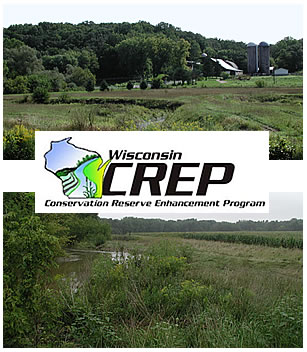 CREP is a resource to help agricultural landowners meet their conservation goals, particularly those who till or graze land along rivers and streams.
CREP is a resource to help agricultural landowners meet their conservation goals, particularly those who till or graze land along rivers and streams.
CREP pays landowners to install filter strips along waterways or to return continually flooded fields to wetlands while leaving the remainder of the adjacent land in agricultural production. The size of land put into CREP varies, and can be a strip as narrow as 30 feet with no minimum acreage size. This allows landowners to enroll land as needed and leave the remainder for farming. Enrollment options are either a 15-year agreement or a perpetual easement.
CREP financial incentives include:
Cost sharing of conservation practice installation
Upfront incentive payments
Annual soil rental payments
Over the agreement lifetime, participants on average receive total combined state and federal payments per acre of $2,900 for 15-year contracts and $4,200 per acre for perpetual conservation easements on tilled land. However, these payments can range widely, depending on soil type and previous land use. Use our
payment calculator to estimate the payments you could receive.
Many land cover and management practice options are available under CREP, depending on the preference of the landowner and site factors. Some of the more common practices are filter strips, riparian buffers, and wetland restorations. More information is available on the
"information for landowners" page.
CREP is a joint effort between the federal, state and county governments. Landowners interested in enrolling in CREP should contact their
county land and water conservation office or local
Farm Service Agency office.
CREP overview: